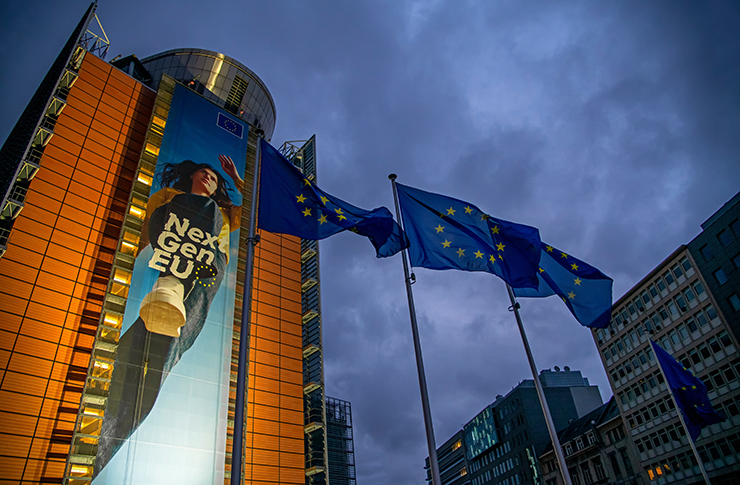The topic of urban regeneration, dealt with in issue 365 of Tsport, is connected with that of land use: one of the aspects highlighted during the summer season that has just passed is that of microclimatic alterations due to the transformation of unbuilt areas.
Land take
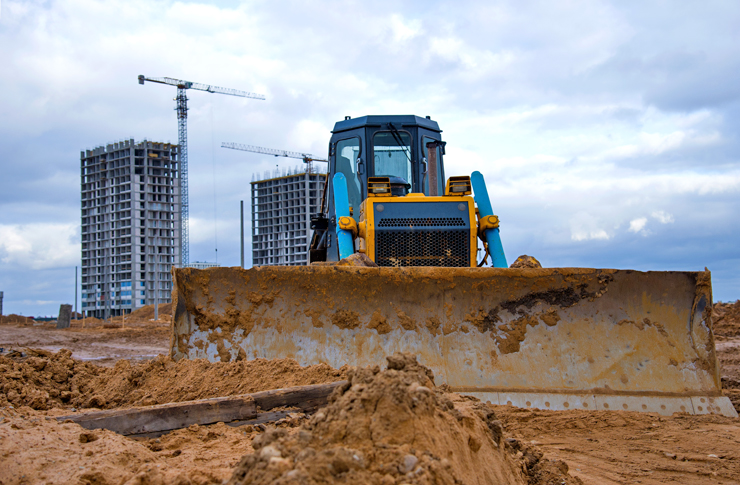
(photo Maksim Safaniuk / Shutterstock)
An exceptionally hot summer, similar to the (hopefully) unrepeatable 2003 summer, has raised general attention on the behaviour of urban surfaces in the thermal field. So much so that the European Space Agency has released some remote sensing images of daytime temperatures taken over a number of European cities showing the difference between built and green surfaces.
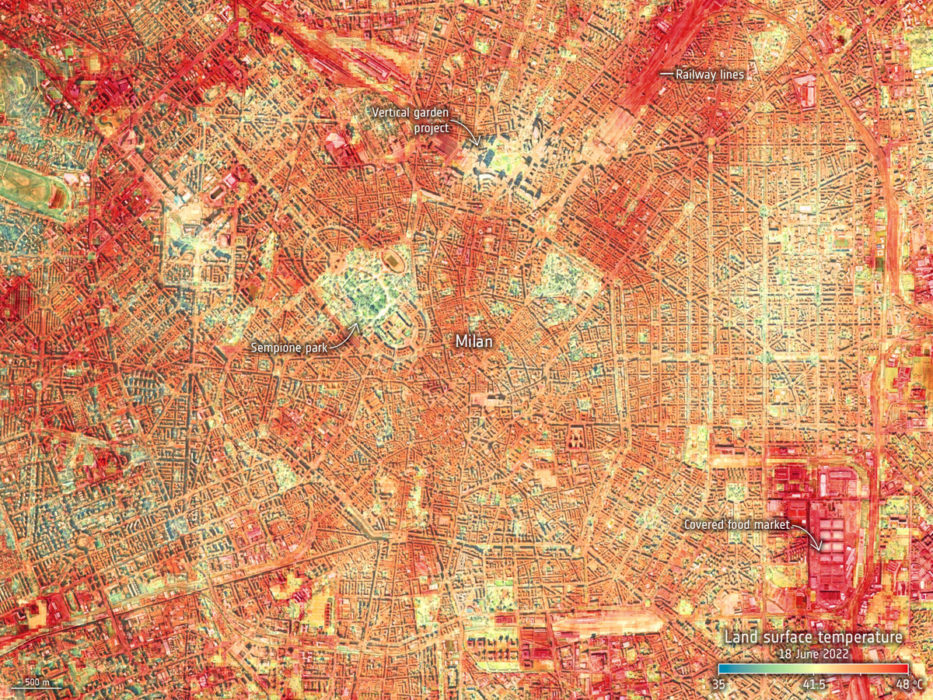
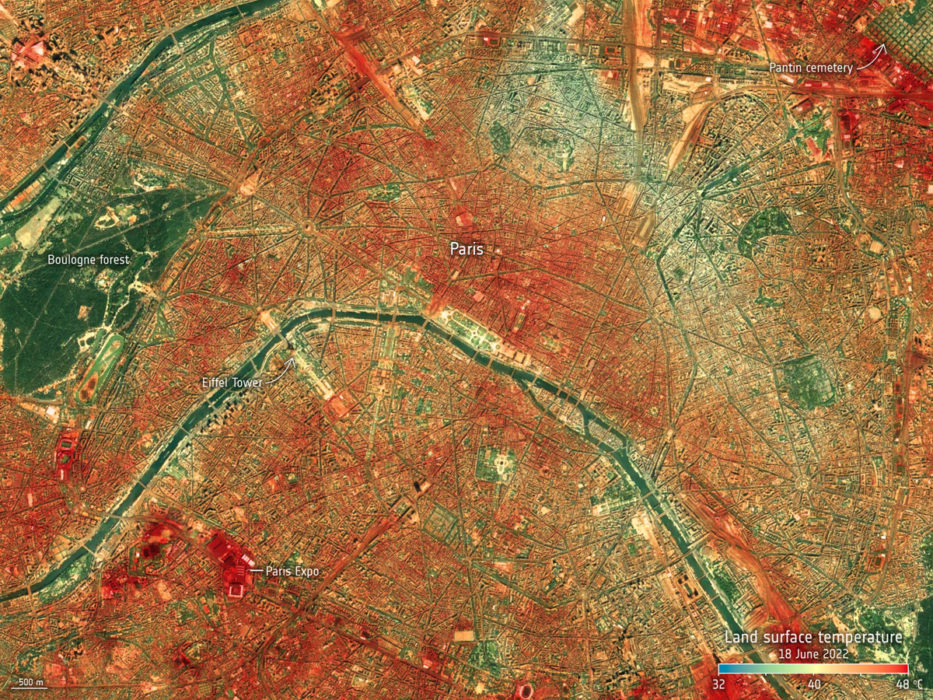
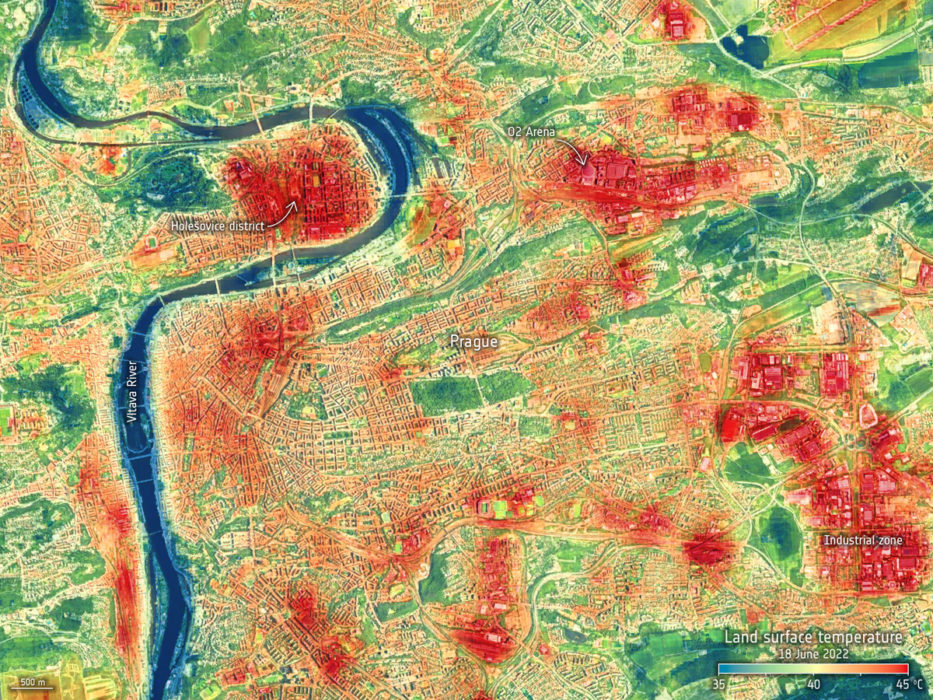
The images, released by ESA (European Space Agency), show the surface temperatures measured over Milan, Paris and Prague on 18 June 2022, using the Ecostress instrument, owned by NASA’s Jet Propulsion Laboratory, located on the International Space Station; this instrument contributes to the development of a new satellite monitoring system, the LSTM (Land Surface Temperature Monitoring) Mission. © NASA/JPL-Caltech.
But it is common experience that when the sun goes down, lawns and cultivated fields quickly shed their accumulated heat, while city streets – and roofs and facades – help to keep the air temperature high until late at night. The image produced by the Metropolitan City of Milan using the average surface temperatures measured by the AQUA satellite between 1 a.m. and 3 a.m. during the summer heat waves of 2015-2018 is exemplary.
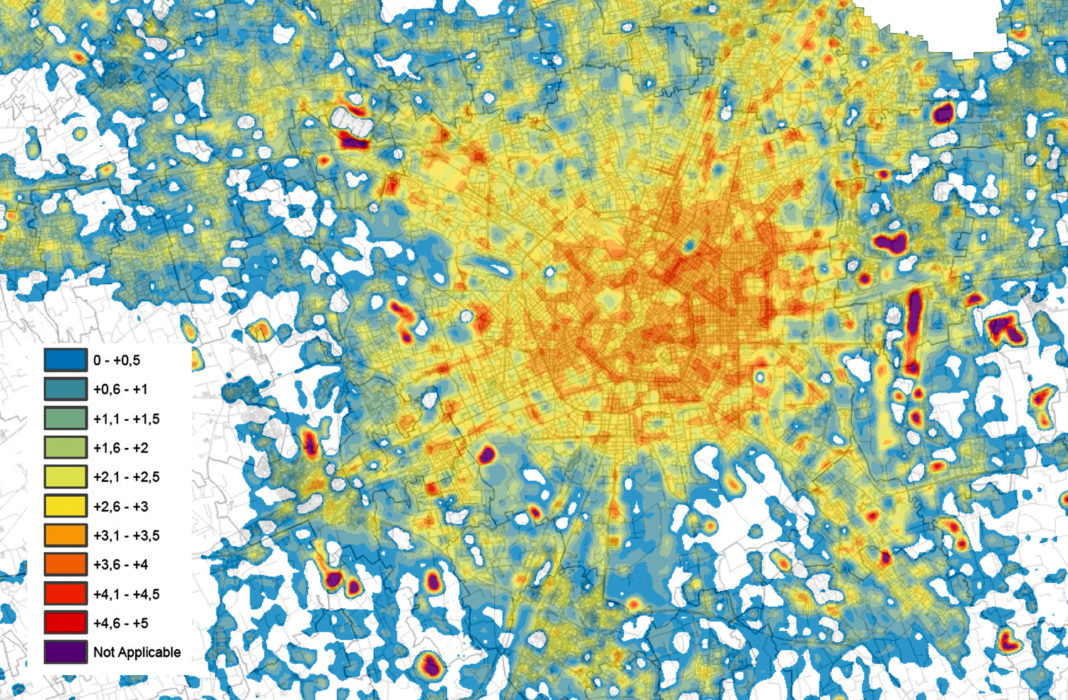
Nighttime heat island in the Milan metropolitan area, measured as the average temperature anomaly during the summer months 2015-2018 between 1 and 3 am (Project ‘Life Metro Adapt’, strategies and measures of climate change adaptation in the Metropolitan City of Milan, 2018-2021).
This is just one more reason to argue in favour of reducing land take. The report âConsumo di suolo, dinamiche territoriali e servizi ecosistemici – Edition 2021â, drawn up by the National System for Environmental Protection (SNPA, which includes the regional ARPAs and ISPRA), confirms, even with last year’s data, ‘the critical nature of land use in peri-urban and urban areas, where there is a continuous and significant increase in artificial surfaces, with an increase in the density of built-up areas to the detriment of agricultural and natural areas (…). ) The data confirm the advance of phenomena such as sprawl, dispersion, and urban decentralisation on the one hand and, on the other, the strong push towards densification of urban areas, which causes the loss of natural surfaces within our cities, precious surfaces to ensure adaptation to the climate change underway‘.
The opportunity we have, in this issue, to talk about sports facilities in urban regeneration programmes, is also an opportunity to remind us once again that the soil resource is limited and that from now on any project must take this into account for our own good and that of future generations.










